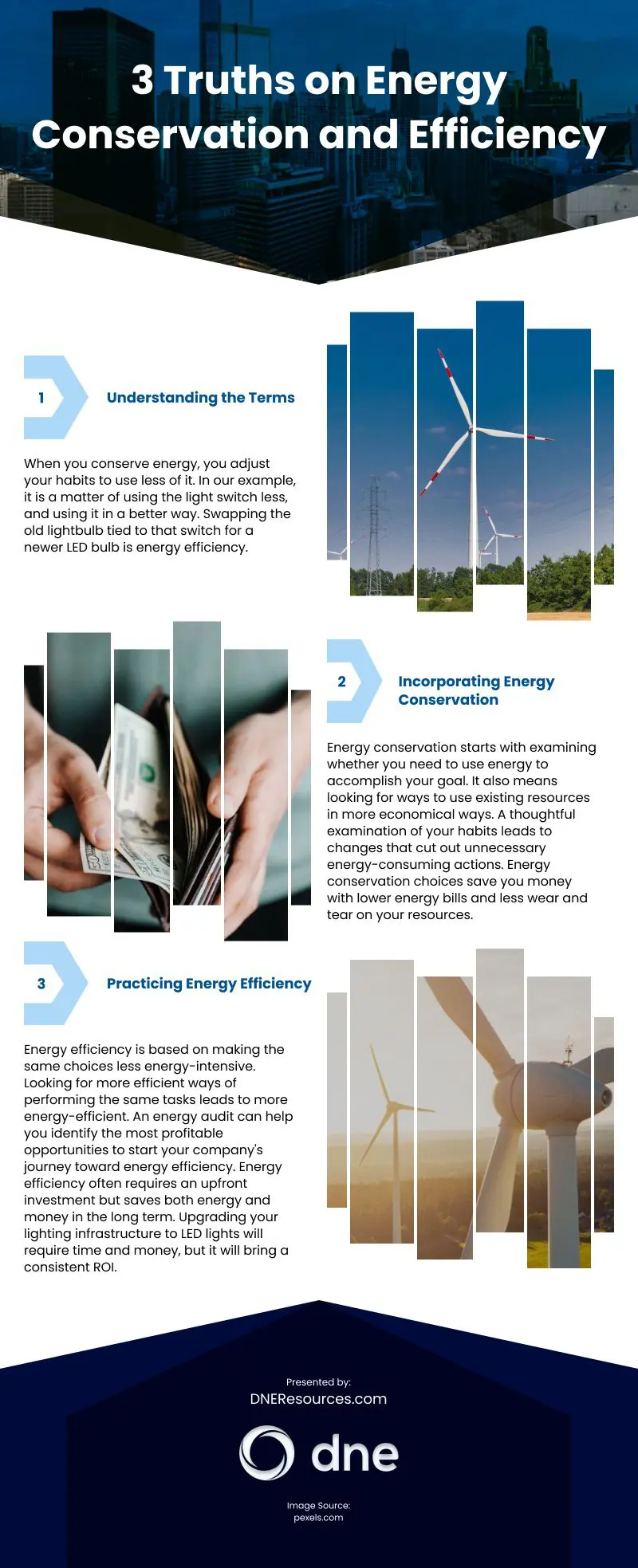
Throughout the years, there has been an increasing focus on energy conservation and energy efficiency to reduce waste and increase savings. As the world is continuously facing energy problems, such as resource depletion, global warming, and pollution, it is important to comprehend the basics of energy efficiency and conservation to help create a sound energy strategy.
According to recent statistics, energy consumption has increased yearly due to the growing population, technological advances, and increased economic activity. Approximately the world’s energy demand will double by 2050. To meet these demands, the government is encouraging the conservation of energy and energy efficiency by providing incentives and programs to gain cooperation and participation from the public.
Energy conservation and energy efficiency are concepts, but they both refer to reducing energy use.
Energy conservation means using less energy in daily activities, such as turning off lights when not in use or taking shorter showers. It is a behavioral approach that encourages individuals to reduce their energy consumption. Many may not realize this, but conservation benefits companies by reducing operating costs and, in the long run, reducing energy demand, while for households, it means lower energy bills. Putting this into practice can be done further by:
- Installing energy-efficient products such as LED light bulbs, energy-efficient appliances, and windows
- Insulating your home properly to reduce the need for cooling and heating
- Using renewable sources of energy such as solar panels and wind turbines
- Insulating walls, roofs, and floors thru the use of foam insulation
- Automated lighting systems such as motion-sensor lighting and daylight sensors that adjust light brightness depending on the amount of natural light
On the other hand, energy efficiency is a long-term goal of reducing overall energy use using more efficient systems and technologies. It involves changing technologies, processes, and equipment to reduce the energy used while maintaining the same level of service. In the case of energy-efficient appliances that use less energy, consumers can save on their utility bills by using them. Furthermore, energy efficiency can manifest itself in the following ways:
- Making existing buildings more energy-efficient by installing new, improved systems
- To improve your home’s energy efficiency, install high-efficiency air conditioners, heat pumps, and water heaters.
- By utilizing advanced controls for industrial processes, such as variable frequency drives and sensors that measure temperature, pressure, and flow rate, you can improve the efficiency of your process while maintaining a safe work environment.
- Using solar energy and other renewable energy sources, such as wind or hydropower, which is helpful in times of peak demand
Achieving energy efficiency and conservation involves a lot of effort from the government, industry, and individual households. However, understanding the importance of these concepts is the first step towards creating a viable energy strategy that can help reduce waste while saving money in the long run. We need to be aware of how much energy we use, and by utilizing both conservation and efficiency measures, we can create a sustainable future for all. Start making small changes today; together, we can make a difference.
source: https://dneresources.com/energy-conservation-vs-energy-efficiency/
Comments
Download this infographic.
